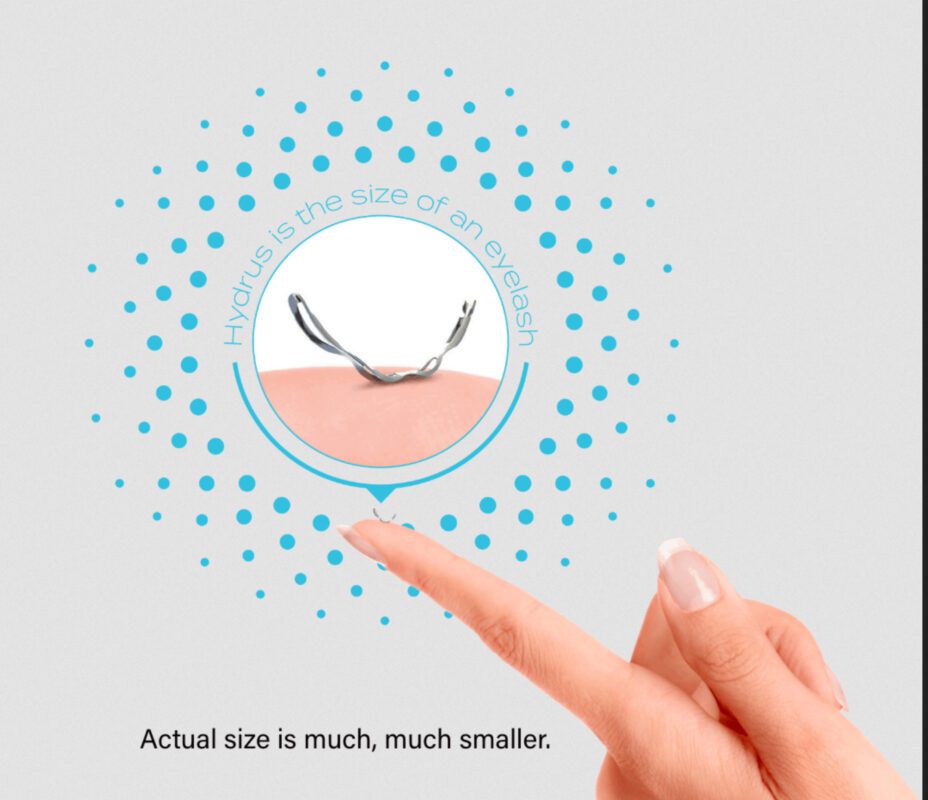Ivantis Inc., developer of the novel Hydrus® Microstent, a minimally invasive glaucoma surgery (MIGS) device intended to lower eye pressure for open-angle glaucoma patients, today announced that the first patient has been enrolled in a pivotal clinical trial evaluating the Hydrus Microstent in patients with mild to moderate open-angle glaucoma, without concurrent cataract surgery. Up to 80% of glaucoma patients have mild to moderate disease severity, and a standalone Hydrus Microstent procedure could provide an important new treatment option in the U.S.
Currently in the U.S., MIGS implants are approved only in conjunction with cataract surgery, not as a standalone procedure. The FRONTIER trial will evaluate the effectiveness of the Hydrus Microstent in patients who have already had cataract surgery, making the study a vital addition to the growing body of evidence on the Hydrus Microstent.
Outside the U.S., the Hydrus Microstent is routinely performed as a standalone MIGS procedure (in addition to concurrent with cataract surgery), and prior studies have shown a reduction in both intraocular pressure (IOP) and medication use.1 The Hydrus Microstent has also been shown to reduce peaks and fluctuations in the diurnal IOP curve.2
The FRONTIER trial will build on long-term findings from the Hydrus HORIZON five-year pivotal trial, which showed a 47% reduction in visual field loss, sustained reduction in medication use, and over 60% reduction in subsequent, more invasive glaucoma surgery.3,4 The Hydrus Microstent is the only MIGS device to complete a pivotal trial with five-year follow up data showing both durable safety and efficacy. It also stands alone in receiving the highest grade for quality body of evidence and a strong recommendation among MIGS rated in the 2020 American Academy of Ophthalmology Primary Open-Angle Glaucoma Preferred Practice Pattern (PPP). 5
“The Hydrus Microstent has already demonstrated significant clinical benefits in terms of glaucoma progression when used in combination with cataract surgery. FRONTIER will reveal important new findings on Hydrus as a standalone MIGS procedure. The trial’s inclusion and exclusion criteria allow for a broad population to be treated,” said Nathan Radcliffe, MD, medical monitor for the FRONTIER trial and associate clinical professor of ophthalmology at Mount Sinai School of Medicine.
The FRONTIER trial will include up to 32 study sites inside and outside the U.S., and will comprise:
- 234 eyes treated with the Hydrus Microstent (single-arm study) in patients with prior cataract surgery with no complications (pseudophakic), no prior MIGS, cilioablation or incisional glaucoma surgery
- Primary effectiveness endpoints evaluated at one year with follow-up through two years for safety
- Co-Primary effectiveness endpoints:
- Proportion of subjects with ≥ 20% unmedicated DIOP reduction at 12M vs baseline
- Mean change in unmedicated DIOP at 12M vs baseline
“We have followed thousands of eyes in trials and registries in both combination cataract and standalone surgeries, and our belief is that no other MIGS device provides the safety and efficacy of Hydrus as a durable, reconstructive, and permanent implantable solution — the data show sustained long-term benefit,” said Dave Van Meter, president and CEO of Ivantis. “With the FRONTIER trial, we are embarking on an exciting opportunity to change the course of the disease in the U.S., offering hope for thousands of glaucoma patients and the practitioners who care for them.”
